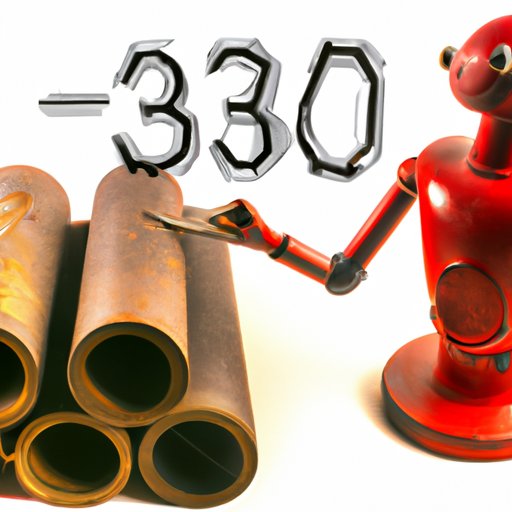Introduction
Automated welding robots offer numerous benefits, such as increased productivity, improved precision and accuracy, and reduced labor costs. They are becoming increasingly popular among manufacturing companies looking to improve their operations. But how much does a welding robot cost? This article provides a comprehensive guide to the cost of automated welding robots.
A Comprehensive Guide to the Cost of Automated Welding Robots
When considering the purchase of an automated welding robot, it’s important to understand the financial investment required. The cost of a welding robot can vary greatly depending on the type of robot, its features, and the application for which it will be used. Here’s a breakdown of the various costs involved in owning and operating a welding robot.
The Financial Investment Required to Own a Welding Robot
There are three main costs associated with purchasing a welding robot: the initial purchase price, installation costs, and maintenance and repair costs.
Initial Purchase Price
The initial purchase price is the most significant cost associated with the purchase of a welding robot. According to the Robotics Industries Association (RIA), the average price of a welding robot ranges from $50,000 to $80,000, with some models costing as much as $200,000. However, the actual cost of a welding robot will depend on the type of robot, its features, and the application for which it will be used.
Installation Costs
Installation costs include the cost of assembling and setting up the welding robot. This includes the cost of any necessary tools or equipment, as well as the cost of any modifications that may be required. According to RIA, installation costs typically range from 10% to 15% of the total cost of the robot.
Maintenance and Repair Costs
Regular maintenance and repairs are essential for keeping a welding robot in good working condition. Costs associated with maintenance and repairs can vary greatly depending on the type of robot, its features, and the application for which it will be used. According to industry experts, maintenance and repair costs typically range from 5% to 10% of the total cost of the robot.
Understanding the Price Range of Welding Robots on the Market
The cost of a welding robot can vary greatly depending on the type of robot, its features, and the application for which it will be used. Here’s a look at the different types of welding robots on the market and their associated costs.
Different Types of Welding Robots
There are several different types of welding robots available on the market. The most common types are spot welding robots, arc welding robots, laser welding robots, and resistance welding robots. Each type of robot has its own unique set of features and capabilities, and the cost of each type of robot will vary accordingly.
Cost Comparison between Different Types of Welding Robots
Spot welding robots are the least expensive type of welding robot, with prices ranging from $25,000 to $50,000. Arc welding robots typically cost between $50,000 and $100,000, while laser welding robots are the most expensive type, with prices ranging from $100,000 to $200,000. Resistance welding robots are also relatively expensive, with prices ranging from $75,000 to $150,000.
Additional Costs Involved in Operating a Welding Robot
In addition to the initial purchase price, installation costs, and maintenance and repair costs, there are several other costs associated with operating a welding robot. These include training costs, material costs, and other miscellaneous costs.
Training Costs
Operators must be properly trained in order to safely and effectively operate a welding robot. Training costs typically range from $1,000 to $2,000 per person. The cost of training will vary depending on the type of robot and the complexity of the application.
Material Costs
The cost of materials used in the welding process will vary depending on the type of robot, the application, and the materials being welded. Generally speaking, material costs range from 10% to 20% of the total cost of the robot.
Other Miscellaneous Costs
There are many other miscellaneous costs associated with operating a welding robot. These include the cost of electricity, water, and air used in the welding process, as well as the cost of any safety equipment that may be required. Additionally, the cost of spare parts and replacement components should be taken into account.
Conclusion
The cost of an automated welding robot can vary greatly depending on the type of robot, its features, and the application for which it will be used. The initial purchase price, installation costs, maintenance and repair costs, training costs, material costs, and other miscellaneous costs should all be taken into account when budgeting for a welding robot. Investing in a welding robot can provide numerous benefits, including increased productivity, improved precision and accuracy, and reduced labor costs.
(Note: Is this article not meeting your expectations? Do you have knowledge or insights to share? Unlock new opportunities and expand your reach by joining our authors team. Click Registration to join us and share your expertise with our readers.)
